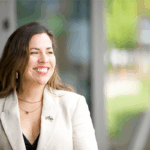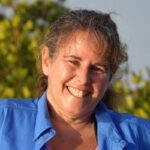Research Area(s)
Human impacts in the marine environment. Both pure ecology questions and goal-based conservation issues for a wide range of marine and estuarine habitats.
Research
Our lab, called CEELAB (Coastal and Estuarine Ecology Lab), focuses on a wide variety of problems impacting our coastal waters, especially the Indian River Lagoon system on the east coast of central Florida. Additionally, we focus on sharing this information with children, educators, families and stakeholders throughout the region through hands-on events, children’s storybooks that we have produced, and oyster storytelling yoga.
CEELAB current research topics are divided here into three areas. First, research associated with successful oyster reef restoration and resilience of oysters includes: impacts of recreational boat wakes and hurricanes; brown tide and other algal blooms; boring sponge infection; invasive mussels, crabs, and barnacles; genetic diversity of native oysters and marshgrasses used in restoration; microplastics and oysters; infaunal abundances and diversity; mangrove/oyster interactions on intertidal reefs with changing climate; direct human impacts – boat strikes, harvesting; and the impact of community volunteering on human behaviors. Second, to improve living shoreline stabilization and to better understand the ecology of mangrove and saltmarsh-dominated shorelines, we are studying: how to maximize greenhouse growing methods for mangroves and marshgrasses; recruitment and success of juvenile mangroves at a range of wave energies; microplastics in coastal waters and sediments, especially around stormwater outfalls; use of shorelines by infauna and threatened/endangered wading birds; and modelling suitability of shorelines for stabilization. Third, we are interested in threatened and endangered wading birds and understanding: how restoration helps improve estuarine habitats for birds; seasonal and spatial abundances and diversity of birds in Mosquito Lagoon, Florida; bird use of human-produced structures (e.g. poles and pilings) vs natural perches; human impacts on bird behaviors, including nesting; and collaborating with hospitalized children at Nemours Children’s Hospital as citizen-science data collectors.
For our research and restoration efforts, we combine extensive field research with laboratory and GIS data collection. We collaborate with biologists, ecologists, biogeochemists, modelers, engineers, drone experts, social scientists, and resource managers. We use our science to guide our community engagement in collaboration with outreach specialists and preK-12th grade educators.



